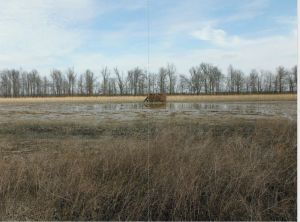
A study to determine if neonicotinoid insecticides are present in Missouri public wetlands at concentrations that may cause harm to beneficial, non-target aquatic invertebrates and other taxa. This study measured neonicotinoid concentrations in Missouri public wetlands and evaluated the landscape characteristics associated with those concentrations. In addition, it evaluated the prevalence of neonicotinoids in the surrounding landscape and surface waters.
Neonicotinoids are a class of insecticide widely adopted for agricultural use throughout North America and Europe, in large part because they are selectively more toxic to insects than vertebrates. Neonicotinoids are highly water soluble and have reported half-lives of up to 1000 days. The combination of these characteristics in concurrence with their widespread use suggests horizontal movement of neonicotinoids via runoff into various surface waters such as streams and floodplain wetlands that are found in Missouri. Specific objectives of this project included: 1) Quantify neonicotinoid concentrations in Missouri public wetlands and evaluate landscape characteristics associated with those concentrations, 2) Develop a predictive model for temporal and spatial variation of neonicotinoid concentrations in Missouri wetlands, 3) Compare tree swallow (Tachycineta bicolor) reproductive and brood rearing efforts at wetlands with varying neonicotinoid concentrations, 4) Assess the impacts of direct application of neonicotinoids on MDC intensively managed wetlands on aquatic macroinvertebrate biomass, taxa richness, and secondary production, 5) Evaluate the effects of neonicotinoid levels on the survival of aquatic macroinvertebrate species with different life histories and 6) Evaluate sediment toxicity of neonicotinoids to common benthic dwelling invertebrates. Missouri public wetlands will be used because of their ecological importance for invertebrate and vertebrate taxa including migrating waterfowl and other waterbirds.
